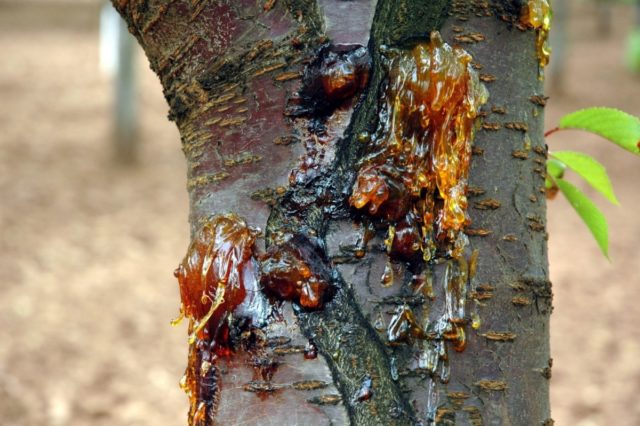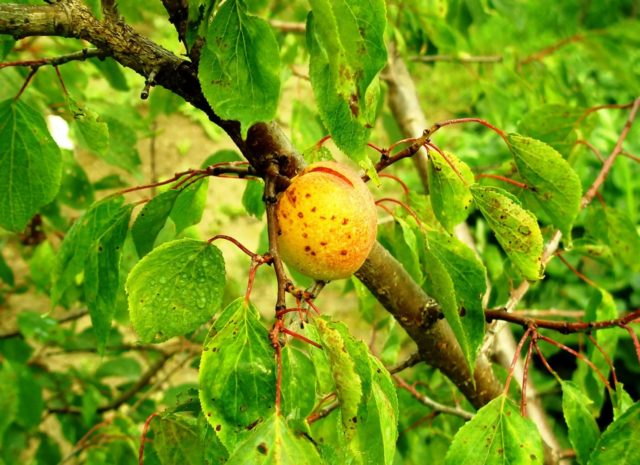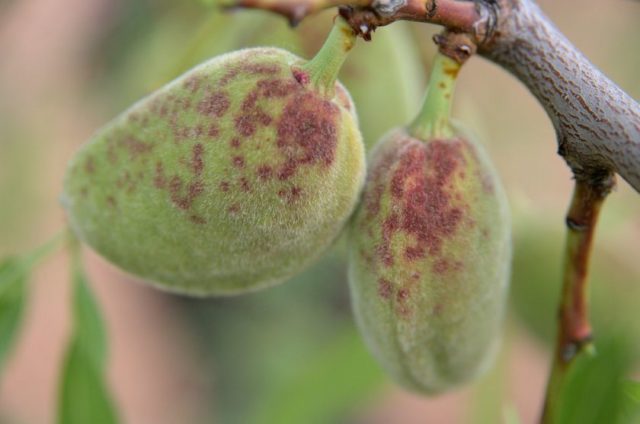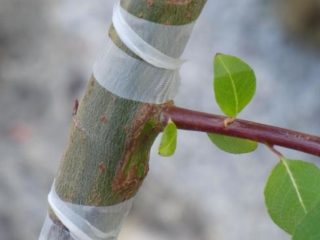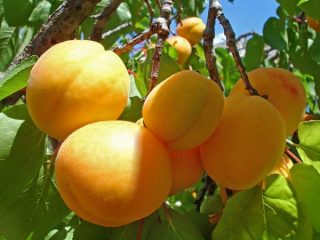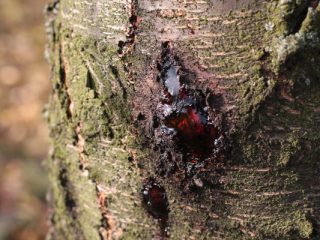Content
- 1 What year does the apricot bear fruit after planting
- 2 Will an apricot bear fruit if it is alone
- 3 How many apricot pieces must be planted so that they bear fruit
- 4 How apricot bears fruit
- 5 How long does an apricot bear fruit
- 6 How often does an apricot bear fruit?
- 7 Why apricot does not bear fruit
- 8 What to do if the apricot does not bear fruit
- 9 Why does apricot bear fruit badly?
- 10 Recommendations
- 11 Conclusion
The apricot tree is thermophilic and requires special care. Following the recommendations of experienced gardeners will help you get a good harvest from your personal plot. If the apricot does not bear fruit, then the primary source must be sought in an incorrectly selected landing site, irrigation violations, incorrect bait or in the attack of parasitic insects, diseases.
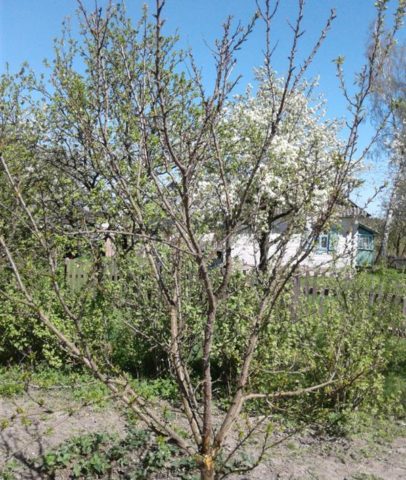
If the apricot does not bloom, the reason may be non-compliance with the rules of agricultural technology.
What year does the apricot bear fruit after planting
There are several factors that determine the rate at which fruit appears on a tree.
Dates when apricot begins to bear fruit:
- Planting method... If the work took place with seedlings, then the first apricots should be expected no earlier than 36 months later.
- Drop off location... The plant must be protected from northerly winds. Ground waters near the root system are especially dangerous for the seedling. The tree does not tolerate constant moisture, the roots will begin to rot, and it will die.
- Formation time the first fruit depends on the variety of apricot. When buying young animals, you need to focus on local climatic conditions, regional and quality characteristics.
For the stock, you can use not only wild game, but also any stone fruit plant, plum or cherry plum. When planting work, it is necessary to ensure that its root part rises above the ground level (5-6 cm).
Will an apricot bear fruit if it is alone
The plant does not always need a pair for fruiting. There are self-fertile species that give decent harvest volumes, for example, Northern Triumph, Tsarsky, Dessert, Pineapple.
Experienced gardeners advise, before buying seedlings, to check with the seller all the quality characteristics of the tree.
How many apricot pieces must be planted so that they bear fruit
Experts recommend planting 2 to 4 trees of the same variety so that they can pollinate each other. The artificial type of pollination is recommended for Iceberg, Countess, Success, Best Michurinsky, Kichiginsky.
If the size of the site does not allow planting a full-fledged garden, then a branch of another variety of culture is grafted onto one apricot tree.
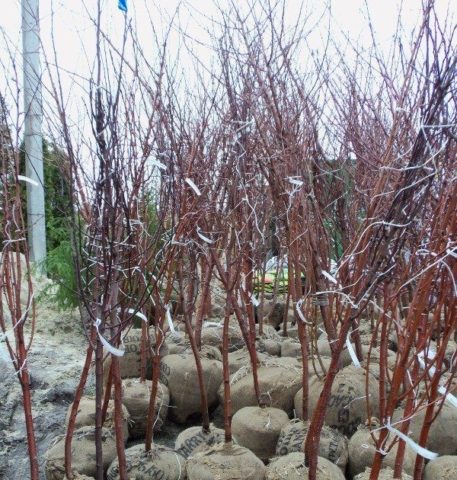
When buying apricot seedlings, you need to find out its characteristics
How apricot bears fruit
The characteristic features of the tree include the ability to transform growth buds into fruit buds on the shoots of the 2-3rd wave of annual growth. With the improvement of the water regime, they give another wave of growth: after the main one, which takes place in the spring and summer, at the end of the season, the apricot gives additional shoots (subject to standard feeding). The resulting branches bloom later (after 7 days), give a good harvest next year and are less susceptible to the influence of return frosts in the spring.
On which branches does the apricot bear fruit
Most of the crop is formed on short branches, less on strong annual shoots.The best quality fruits are obtained from overgrown parts located near thick branches.
How long does an apricot bear fruit
The culture has been bearing fruit steadily for about 20 years in a row. The increase in crop volumes depends on:
- from the correct choice of the landing site;
- correct pruning;
- timely watering and feeding.
There are cases when apricot bears fruit up to 25 years. In the absence of proper care, he may die earlier than the specified time.
How often does an apricot bear fruit?
The frequency of fruit formation depends on various factors:
- landing region;
- compliance with frost protection rules;
- proper tree care.
Experts believe that the apricot should bear fruit annually, but in some cases there may be a rest period: every two seasons. The absence or paucity of crops is associated with poor quality care or flowers that have died from spring frosts.
Why apricot does not bear fruit
If there are no fruits on the apricot, then the sources of the problem are considered:
- landing in heavy and clayey soil, the issue is solved by the introduction of sawdust, sand, manure, regular (in spring, summer, autumn) digging of the earth in the area of the near-stem circle;
- increased acidity of the soil, its indicators are artificially reduced by adding lime;
- insufficient or excessive watering.
Improper fertilization has a negative effect on the yield. In the spring, you need to make organic, and in the summer, phosphorus-potassium dressings.
Why apricot blooms, but does not bear fruit
Netherflower occurs under the following conditions:
- lack of pollination;
- damage to culture by diseases and pests;
- adverse weather conditions.
If the apricot grows on poor land, then the lack of nutrients also affects its yield.
Why apricot from the stone does not bear fruit
The appearance of fruits depends on the age of the plant: the first shoots after planting appear in the next season. The formation of apricots should not be expected earlier than 5-6 years after planting the seeds. Additional sources of the problem are considered the lack of pollination, improper watering, and frost damage to the kidneys.
Why apricot does not bloom
The reasons why flowers do not appear on the culture are presented:
- poor growth conditions;
- insect attacks and diseases;
- rare or irregular feeding.
The rate of flower appearance depends on the type of tree: some give the first ovaries after 3-4 years, some not earlier than five years of age.
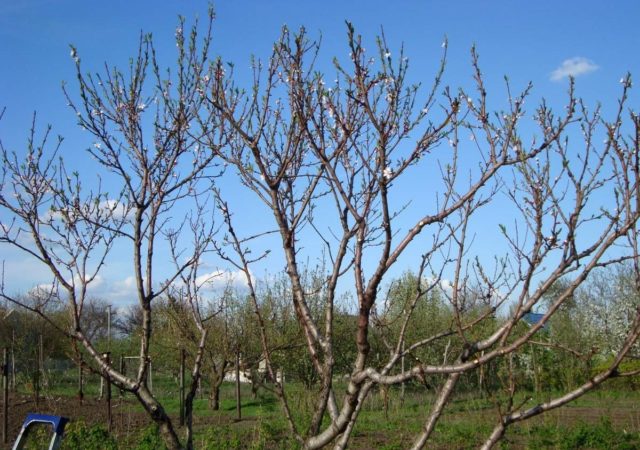
On old individuals over 40 years old, you should not wait for apricots, you need to plant young growth in their place
What to do if the apricot does not bear fruit
Experienced gardeners offer several methods to make apricots blossom and bear fruit. First you need to find the source of the problem and only then choose a way to solve it.
What to do if an apricot blooms but does not bear fruit
Issues with flower formation arise under the influence of several factors:
- the culture is not capable of self-pollination, trees of other varieties are planted nearby;
- rainy weather leads to a decrease in the activity of bees, requires additional attraction of insects.
For preventive purposes, flowers are planted next to the apricot. If the technique is inactive, then spraying trees with honey solution comes to the rescue.
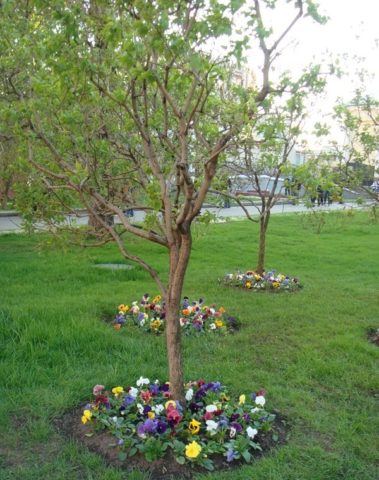
Planting flowers near the apricot will attract bees
What to do if the apricot does not bloom
Ways to resolve issues with flowering depend on the source of their appearance:
- Immaturity of the tree... It is necessary to study the features of seedlings, find out in what year the first formation of flowers occurs. Some varieties bloom for 3-4 seasons, some require 6-8 years.
- Incorrectly selected variety... When buying, preference is given to winter-hardy and frost-resistant subspecies. Heat-loving crops are not suitable for cold climates.
- Incorrect fit... Attempts to plant a seedling in the fall often end in long-term illnesses. The best time for planting is spring. The culture will not bloom on swampy soil, preference is given to loose and nutritious soil. An excess of water, fertilizers negatively affects the condition of the apricot.
- Freezing... Lack of snow, sudden changes in weather can disrupt the formation of flowers due to freezing of the buds. For the winter, trees need to be wrapped, in the spring to stimulate late flowering with 3% Bordeaux liquid, to carry out summer pruning.
Pests and diseases play an important role in the absence of flowers. Known diseases due to which the culture does not bear fruit include:
- Gum therapy - is determined by the appearance of a sticky, viscous liquid that solidifies into a glassy mass. It occurs in response to incorrect pruning, sunburn, frostbite, fungal infection.
Gum outgrowths are removed with a sharp knife, disinfected with 1% copper sulfate, lubricated with garden varnish
- Moniliosis, manifested by the falling of flowers and foliage, cracks in the wood. Before flowering, they are treated with a 3% solution of Bordeaux liquid, after which its concentration is reduced to 1%. Additionally they use: Phtalan, Kuprozan, Horus.
Fruits, flowers, foliage and branches affected by moniliosis are burned
- Clasterosporium disease - a fungal infection affects all parts of the plant. It is determined by the appearance of orange-reddish spots that degenerate into chronic ulcers, the leaves are covered with holes.
Treatment of clotterosporia is similar to the fight against moniliosis
Apricot may not bear fruit due to attacks of pests. Leafworm caterpillars destroy leaves, flower buds, and after the process of summer pupation and transformation into butterflies, they re-lay their eggs on nearby trees. To combat parasites, they use Prophylactin, Lepidocid, Chlorophos, Bitoxibacillin. Discovered clutches and folded leaves with insects are cut and destroyed.
Why does apricot bear fruit badly?
Low yields may be associated with:
- With a surplus of fertilizers. The culture requires 4 organic and 2 mineral fertilizers. If the plant is overfed at the seedling stage with fertilizers with an excess of nitrogenous substances, then the flowering time is significantly delayed. A large amount of nitrogen provokes active growth of shoots to the detriment of flowers. If overfeeding has occurred, then the next season the tree is left without feeding.
- Incorrect pruning. Untimely, traumatic removal of excess branches provokes gum flow. Flowering may be minimal or completely absent.
The video explains why the apricot does not bear fruit or refuses to bloom:
Recommendations
The culture will begin to give the expected yields only if the following rules of prevention and cultivation are observed:
- choose the right plant variety suitable for local climatic conditions;
- comply with the conditions for the normative development of the tree, watering, fertilizing, preventive pruning;
- regularly carry out the prevention of diseases and the destruction of insect pests.
Culture requires a certain amount of care. With strict adherence to the rules, many future problems can be avoided and a standard yield can be obtained.
Conclusion
In order not to look for answers why apricot does not bear fruit, you must remember the simplest requirements: Experienced gardeners are advised to study all the available material on culture before buying young animals and planting them. An incorrectly chosen variety, which is thermophilic, will not take root in cold regions, and may die during the first severe frosts. The advice of experts will help to avoid most problems with the apricot orchard, to get a sufficient amount of fruits, and to prevent the development of diseases.
